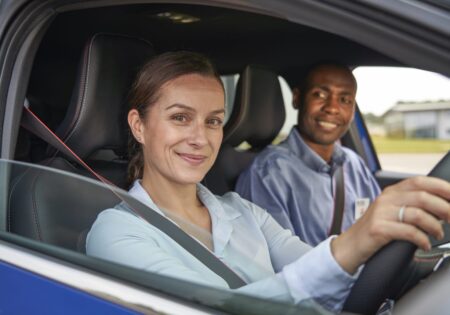Cycling on the road – The rights that you didn’t know cyclists have
It can be dangerous on the road for cyclists. In 2018, 99 pedal cyclists were killed, 4,106 seriously injured and 13,345 slightly injured in Great Britain and fall into the category of ‘vulnerable road users’. Cyclists are more protected than you might imagine. Here are some of those rights and laws that protect them.

Lane splitting or filtering
Cyclists have the right to undertake and overtake cars in order to make faster progress through traffic. This is perfectly legal and is called ‘lane splitting’ or ‘filtering’.
Section 211 of The Highway Code advises that road users should be aware of others filtering through traffic, however, this also mentions that cyclists should avoid filtering in situations where they may come into issues with other road users such as on the approach to a junction.
Overtaking on the right is generally safer than undertaking on the left in most circumstances. However, undertaking on the left can be carried out when traffic is stationary or moving very slowly.
Bikes must be fitted with working brakes and reflectors
Although this may sound like common sense, many are unaware that this is actually a law. A bicycle must legally have reflectors and working brakes installed when used on the road. Cyclists are also required by law to have working front and rear lights if intending to ride at night.
Overtaking cyclists
Drivers are now required to leave enough space for cyclists when they overtake them. The Highway Code states that there must be 1.5 meters between a car and a cyclist, which is about the width of a car door.
If motorists don’t maintain the 1.5 metre distance rule between themselves and cyclists, they can be subject to a fine of up to £100. This is something that police forces are encouraged to enforce and will often be on the lookout for this offence being committed.
Find out here how to safely overtake cyclists as a motorist.

Cycling two abreast
Cycling side-by-side is actually perfectly legal, and it can even work in motorists’ favour when trying to overtake. If a group of cyclists are riding together side-by-side, overtaking them is faster and easier than having to overtake cyclists that are single file. This can also be safer for the cyclists, as they will be more visible to motorists and any cars that wish to overtake will have to do so in a safer manner.
However with that being said, The Highway Code recommends cycling in single file if the road is narrow or busy, or when cycling around a bend, and also states that cyclists can not ride more than two abreast.
Cycling in the middle of the lane
Although it may be something that frustrates motorists, cyclists are entitled to use the full width of the lane in the same way as everyone else. Generally, this is done when cyclists are riding in cities and towns. This is to avoid the chance of a motorist opening their car door and knocking the cyclist.
Cyclists may also choose to ride in the centre of the road to avoid drains or potholes that could cause them to get knocked off of their bike.
Bike lanes
As it states in the name, bike lanes are for the usage of cyclists, however, cyclists have no obligation to actually use them. Often cyclists will opt to use a normal lane over the bike lane due to poor design, and that’s completely fine. But regardless of whether the cycle lane is currently in use by a cyclist, motorists must not drive or park in a cycle lane during its hours of operation.
Hopefully, this has cleared up some questions surrounding laws for cyclists and what rights they have out on the road.







